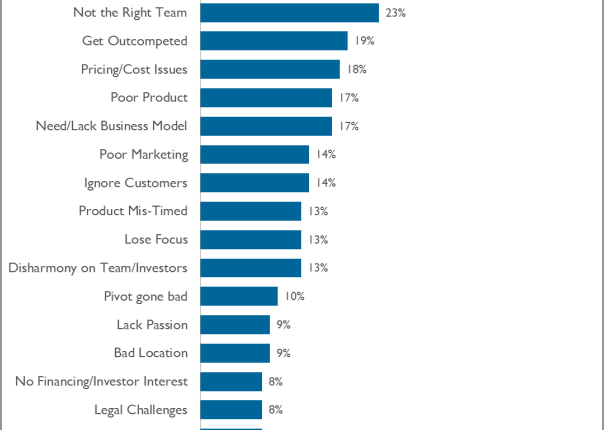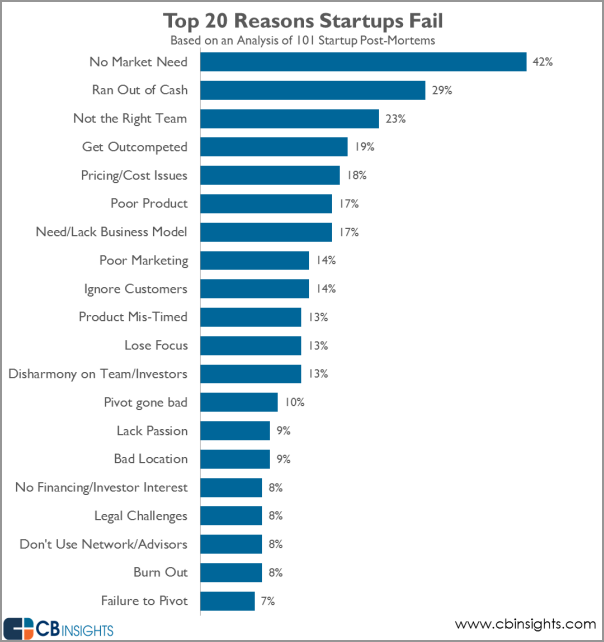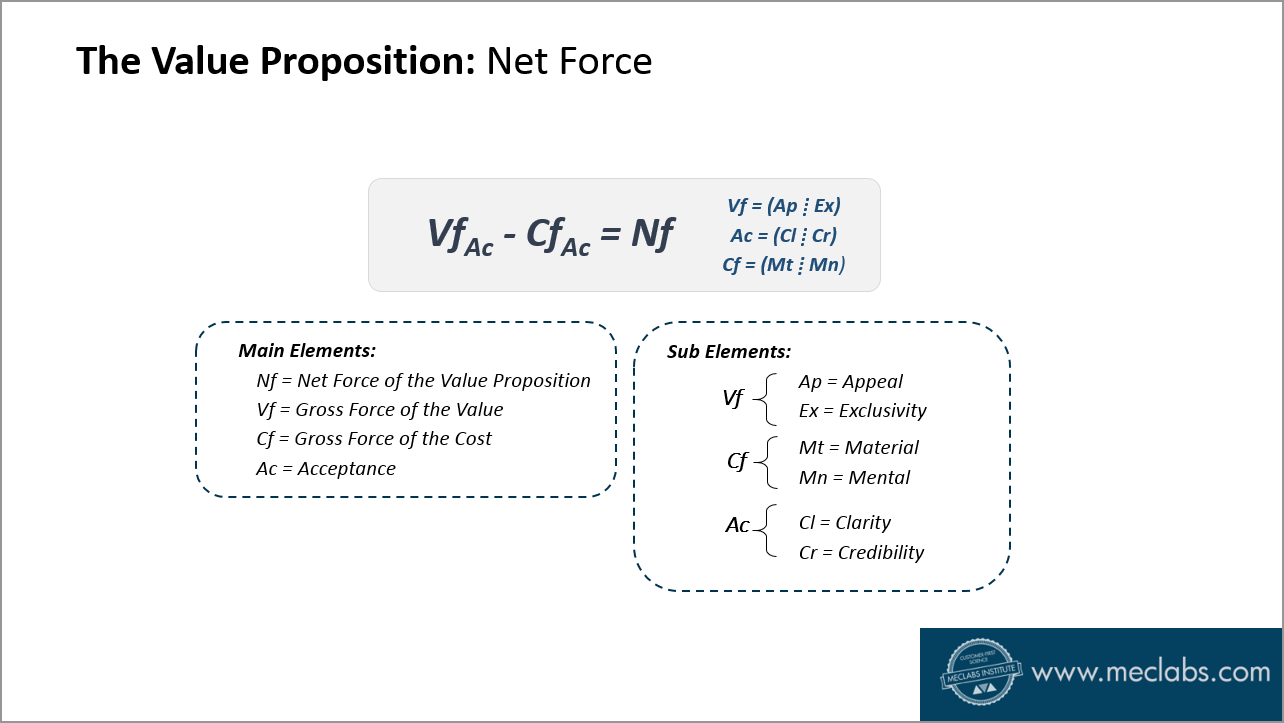Startups can reveal some pretty enlightening information about what makes a successful value proposition. After all, unlike established companies with divisions and brands and patents and factories and distribution networks, the main asset many startups have is their value proposition (often communicated as an “elevator pitch”).
CB Insights recently conducted a post-mortem of more than 100 failed startups to try to figure out what went wrong.
The top reason they failed — “No market need,” cited by 42%.
To put that into marketing terms, their value proposition had no appeal.
Appeal is one of the sub-elements of the patented value proposition heuristic developed by MECLABS Institute, parent research organization of MarketingExperiments. This thought tool has been created to help companies understand what elements are necessary for a forceful value proposition, and how to optimize those factors.
But what is appeal exactly? It is the unspoken desire of the customer — “I want this.”
It is not, however, marketing. Or advertising. Or incentive. And here’s where the confusion often comes in.
You can’t advertise your way out of having no appeal
Well, I guess it is possible. If you have enough money. If you can flood the market with your ads, and work sweetheart distribution deals with key stores and resellers, sure, you could be successful.
But for most companies, advertising and marketing is not where appeal should originate. An incentive should not drive the appeal.
The appeal should be intrinsic to the product, service, experience or offer presented to the customer.
Then, marketing’s role is to tap into the discovered appeal with messaging that clearly and credibly communicates that appeal.
And you can’t dictate appeal
I’m sure you’ve been in meetings where this has happened. The highest-paid person comes up with an idea for a new feature or product that they are interested in, and pushes the idea through creation and marketing because he thinks customers will want it as well.
Except the elephant in the room is this: Everyone knows that most customers won’t care.
Product development must emanate from what is appealing to customers, not thrust upon them.
Sure, there is the occasional golden gut like Henry “If I had asked my customers what they wanted they would have said a faster horse” Ford.
But what would have been so bad about asking? That customer knowledge — customers want faster transportation — could be combined with key decision makers’ business wisdom to create a product that is an alternative to a horse, but yet still delivers the main element that would be appealing: increased speed.
Appeal is a core truth
Appeal is a deep, core truth to why customers want your product and respond to your offers.
It is the delivery of a value they either want or need, and a powerful enough delivery of that value that they will overcome the cost, both monetary and non-monetary (time, friction, etc.), to obtain it.
How to leverage appeal to improve marketing performance
- Listen. Whether it’s through social media listening, conversations and surveys of customers, or meetings with customer-facing employees like Customer Service and Sales, be open to what customers are telling you. If one customer or sales rep says one thing, you haven’t necessarily identified the appeal. However, once you start seeing a pattern, it will become pretty clear that you should test some changes to the product or offer. For example, Gregory Casey, User Experience Designer and Architect, eBags, would go into customers’ homes and watch them shop to help understand what is appealing to his ideal customer about the experience of buying handbags.
- Segment. There is not a single compelling appeal for all of your customers. The better you segment, the better you are able to appeal to specific customer types and understand the different elements of your product that are appealing to them. For example, way back in 2000, ePrize understood that what would appeal to large and small merchants in an online banner ad about sweepstakes was very different, and was able to generate 0.5% banner clickthrough by targeting that appeal.
- Experiment. Understanding who your groups of customers are (segmenting) and then listening to what those customers want should be used to inform behavioral experimentation designed to discover what appealing messaging will actually encourage them to take action. For example, we ran a PPC ad test to help understand what was most appealing about MarketingExperiments.
- Message. Once you have identified your product’s or offer’s appeal, you must message it in a way that also expresses the exclusivity of the offer to help create an effective value proposition. After all, if something is appealing, but your ideal customer can buy it in many other places, why should they buy it from you?
You can follow Daniel Burstein, Director of Editorial Content, MECLABS Institute, @DanielBurstein.
You might also like
The Top 20 Reasons Startups Fail (by CB Insights)
Boost Your Online Ads: Strengthen your value proposition by focusing on your “only factor” (interactive research brief)
Search Engine Marketing: Finding appeal for your PPC Ads
Value Proposition Development online course [From MECLABS, parent research organization of MarketingExperiments]





